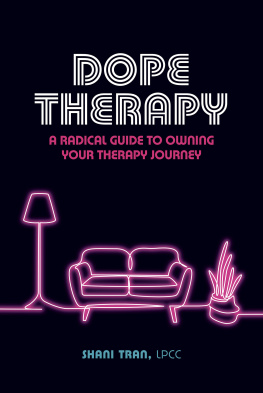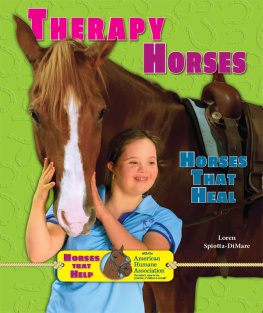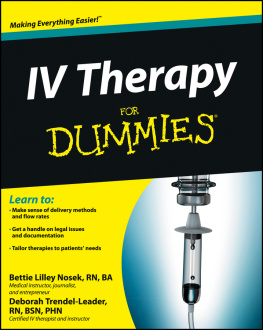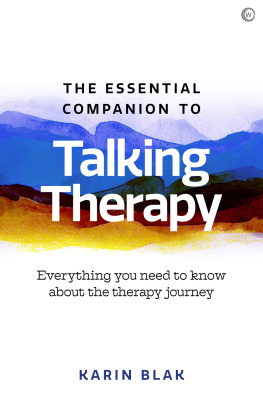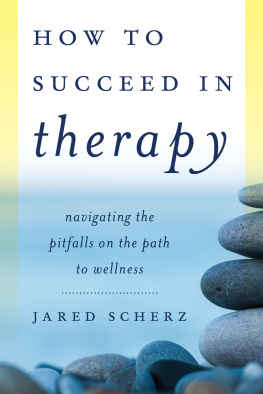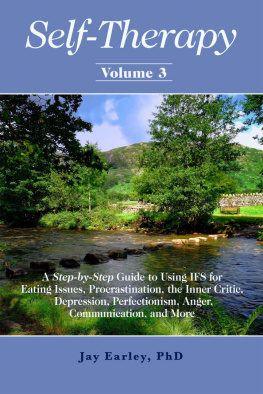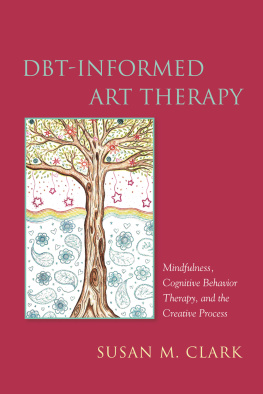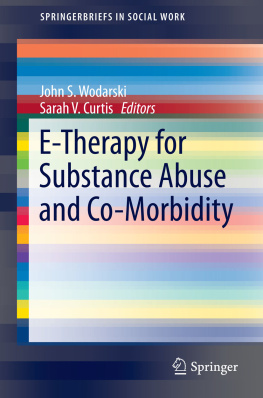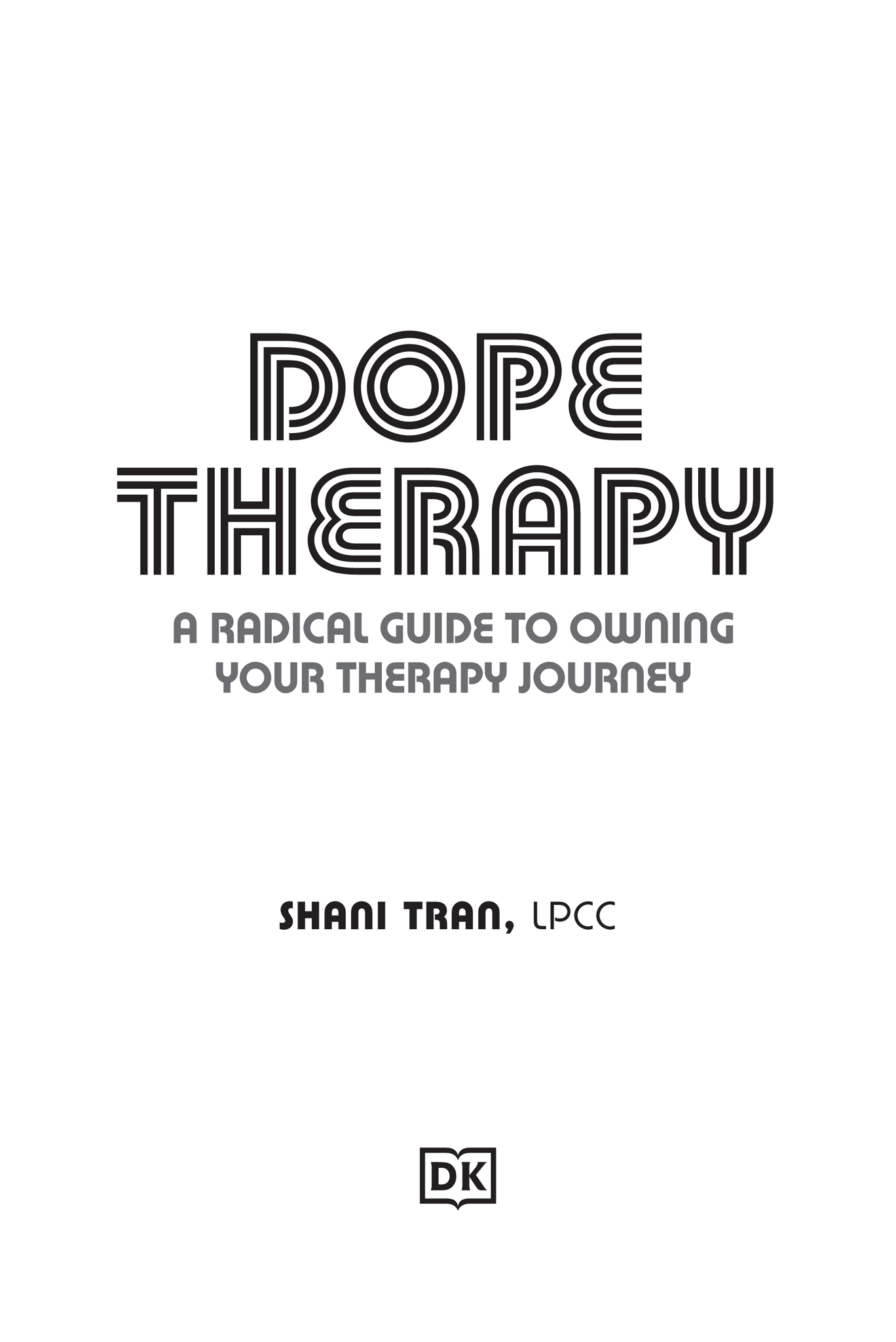Contents
Landmarks
CONTENTS
g
How to use this eBook
Preferred application settings
For the best reading experience, the following application settings are recommended:
- Orientation: Portrait
- Color theme: White background
- Scrolling view: [OFF]
- Text alignment: Auto-justification [OFF](if the eBook reader has this feature)
- Auto-hyphenation: [OFF](if the eBook reader has this feature)
- Font style: Publisher default setting [ON](if the eBook reader has this feature)
- In Settings, change the font size to a size you are most comfortable with.
g
To my girls.
May you know that you are capable
of resilience in the face of pain.
To my social media supporters and clients.
This book was written with you in mind.
g
Introduction
Welcome to this crazy-a$$ journey of therapy. It is one that has the potential to change your life. I know this as both a therapist and a client.
Im Shani T., by the way. I am a Licensed Professional Clinical Counselor in the state of Minnesota. My journey as a therapist started in undergrad, when I was hired for my first job, helping children diagnosed with autism. If you are wondering why I wrote this book, its to help people like you navigate therapy.
I know what it is like to have pain and suffering and to want another option. I wrote this book to be a tool used alongside your therapy journey. This book is meant to help you from start, when you are thinking about going to therapy, to finish, when therapy has ended.
My expertise is validated through my dope #af resume. I have worked in a jail, at a day-treatment facility with teens, as an in-home counselor with parents to keep their kids who are on probation out of trouble, and at a medical insurance company on the behavioral health team. I now own and operate a group private practice.
But thats not where my helping expertise ends. I also have a TikTok where I twerk, play characters, and empower people to own their mental health journey. Most of this book will be about helping you navigate the journey, so to kick it off, I thought we could start with talking about me and my own therapy journey.
What If I Dont Heal?
It had been roughly four years since I had thought about taking my life. I had just had my first child. My husband and I had moved to Minnesota while I was pregnant, so I hadnt made any friends yet. My only support system was him. After having my daughter, we realized we couldnt afford daycare and the best thing to do was for me to become a stay-at-home mom. It was very lonely. I was with a newborn all day, alone with my thoughts. I felt needed in ways that exacerbated my irritability. I would text my friends, but they were usually working, so I didnt get many responses throughout the day. The loneliness started to suck the life out of me like a dementor.
Every day felt like the day before. Wake up, feed the baby, make breakfast, feed the baby, clean, feed the baby, make lunch, clean while the baby naps, feed the baby, go to the park and pretend to look for a mom friend, feed the baby, start dinner, and feed the baby. When my husband got home, I felt too guilty to ask for help because he was working all day. Who was I to ask him for some me time? So, I fed the baby while he relaxed. By 8 p.m., I was mentally and physically drained. One day I woke up and cried. As my daughter was cooing in the early hours of the morning, I just sat down next to her crib, head in my hands, and cried. I was crying because I knew something was wrong. But I cried harder because my solution was to take my life.
I was supposed to be happy! But I wasnt. I didnt understand why I felt the way that I did. I dont recall anyone in my family talking about feeling lonely and sad after having a baby. They said it would be hard, but they didnt say anything about feeling suicidal. The last time I had been suicidal, I had just graduated from my bachelors program. I didnt take my life because I always believed God wouldnt forgive me and I would go to hell. I dont like being hot, so the thought of spending eternity in hell without any water or AC felt like suicide wasnt worth it. So, I kept going. I kept pretending I was happy. I kept socializing. And I just kept going.
In keeping going, I tried to make friends and practice self-care. No one tells you as an adult how hard it is to make new friends. Although I was a SAHM, I worked part-time in the evenings two nights a week. The highlight of my week was going into work for my four-hour shift. My life was going according to plan. But on the inside, there was this pain that went unhealed.
When I started to consider how my daughter would feel growing up and knowing that her mommy died by suicide, I thought to myself, Youre skating on thin ice with these thoughts. So, I reached out to some friends. While I was waiting for them to reply, I remember thinking, I want to die, and I hope they know that responding is what could save my life. And thats when I knew it was time to give therapy a try.
I found myself struggling to find a Black therapist. But honestly, my life was at stake, and I needed to see someone ASAP. So, I found someone who had an immediate opening. I remember driving to the office feeling ecstatic and thinking, This could save my life. Thats all I wanted. When I sat down, I knew right away that this woman was not the therapist for me. But I reminded myself, We are here to save your life. I made myself go. I showed up to every appointment. I didnt dislike her, and she did provide the space for me to talk. We just didnt vibe. Back then I didnt know what the relationship between a therapist and client was supposed to look like. The more I went, the less I wanted to die by suicide. The more I went, the less lonely I felt. I knew, every other week this lady would listen to me, validate me, and support me, and that was what I needed.
What if I had never gone to therapy? What if I hadnt stayed with that therapist? Although she wasnt a good fit all around, she did give me what I needed at that time. That imperfect therapeutic relationship was enough to kick-start my healing journey. And because of that, I get to help you start yours. I am here today to talk to you, as a therapist, about dope therapy. I want you to ask yourself: What is the risk if I dont heal?
g
How to Use This Book
I wrote this book because I wanted to offer an informed and down-to-earth resource for getting the most benefit from therapy. It is filled with information to help you navigate the murky waters of the therapeutic relationship, from understanding trauma to doing the work, and everything in between. There are two ways that you can read this book.
As a self-help guide in navigating your therapy journey. If youre considering therapy but dont know where to start, reading this book from start to finish will help you better understand how the process works and will guide you through each step of the therapy journey. It will let you know what to expect and what to look out for as you begin therapy.
As an la carte companion to your therapy journey. If youve already embarked on your therapy journey, you can dip into this book as needed. Refer to the table of contents to find the chapter that addresses what youre experiencing during therapy. For instance, if youre not vibing with your therapist, you may visit : Is Therapy Helping? can help with that.

